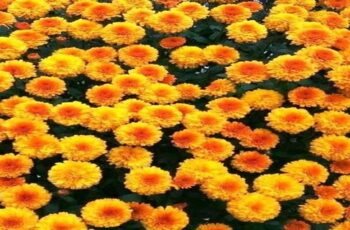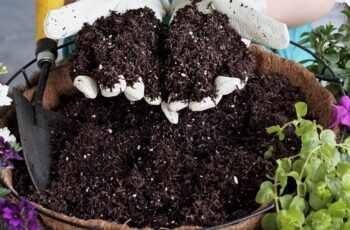Ad Blocker Detected
Our website is made possible by displaying online advertisements to our visitors. Please consider supporting us by disabling your ad blocker.
Learn when to prune your cucumber plants and how to do it for bigger harvests.
Pruning cucumber plants is an essential practice for home gardeners and commercial growers alike. Proper pruning ensures healthy vines, better fruit production, and reduced risk of disease. This article will guide you through the key aspects of pruning cucumber plants, from identifying the main vine and lateral stems to regularly monitoring for new growth and potential issues.
Cucumbers thrive in well-drained, rich garden soil with a slightly acidic pH between 6.0 and 6.8. As the cucumbers develop and mature, they depend on a well-maintained plant structure to optimize nutrient distribution and access to sunlight. Pruning methods include trimming secondary vines, removing damaged or unhealthy cucumbers, and eliminating young growth points for improved overall growth and fruit production.
Implementing these pruning techniques allows the cucumber plant to direct its resources toward producing higher-quality fruits, resulting in more flavorful and abundant harvests. As you read further, you’ll learn the step-by-step process to properly prune your cucumber plants and ensure a successful growing season.
Why Prune Cucumber Plants
Pruning cucumber plants is a crucial step in maintaining their overall health and productivity. It ensures the plants receive the required amounts of energy, light, and air circulation, leading to a successful harvest.
One primary reason to prune cucumbers is to conserve the plants’ energy. By removing unnecessary growth points, the plant can focus its resources on producing high-quality cucumbers, rather than spending energy on excessive vines and leaves. This results in better fruits and an overall increased yield.
Another advantage of pruning is improved light penetration. As cucumber plants grow, their foliage can become dense, blocking sunlight from reaching the lower leaves and fruits. Removing excess leaves and vines, allows for better light distribution, ensuring the plant has the necessary resources to produce more abundant and healthier cucumbers.
Air circulation also benefits from pruning. Dense foliage can create a moist environment, inviting fungal diseases and pests, which negatively impact the plant’s health. Removing excess leaves and ensuring even spacing between vines allows proper air circulation, reducing the risk of diseases and promoting a healthier growing environment for the plant.
A well-pruned cucumber plant can also lead to an easier harvest. When vines are properly pruned and maintained, locating ripe cucumbers becomes less cumbersome, allowing for a more efficient and enjoyable harvesting process.
In summary, pruning cucumber plants is essential for their overall health, improved energy and light utilization, adequate air circulation, and a more manageable harvest. Taking the time to prune your cucumber plants will result in better quality fruits and an overall more rewarding gardening experience.
Tools and Timing for Pruning
When it comes to pruning cucumber plants, having the right tools and knowing when to prune is crucial for maintaining a healthy and productive plant. In this section, we will discuss the essential tools and the proper timing for pruning cucumber plants.
First, let’s talk about the two main tools you will need for pruning:
-
- Sharp pruning shears: These are important as they make clean and precise cuts, preventing damage to the plant tissue. Make sure to clean and disinfect your shears to avoid spreading diseases between plants.
- Gardening gloves: Wearing gloves while pruning protects against potential skin irritation and scratches from the plant’s spines.
Now that you have your tools ready, let’s discuss the optimal timing for pruning cucumber plants. Pruning should begin once the plant reaches a height of 1-2 ft (0.30-0.61 m) as mentioned in the search snippet from WikiHow. Regular trimming during the growing season is necessary to maintain the health and productivity of the plant, as advised by Homes & Gardens.
Keeping on top of pruning is important, but can easily be incorporated into your routine while picking cucumbers. When pruning, remove any dead, damaged, or diseased portions. You should also remove 4 to 6 suckers (small, green, spiky offshoots) at the bottom of the vine to improve growth.
Identifying and Pruning Parts of Cucumber Plants
Main Vine and Stems
The main vine, also known as the leader stem, is the primary growth of a cucumber plant. Pruning involves trimming secondary vines that grow close to the base when they’re 2-5 inches long. This allows better sun exposure and nutrient distribution for the formation of healthier fruits.
To prune the vines effectively:
-
- Find the main vine (leader stem) and identify the secondary vines
- Trim the secondary vines near the base, as long as they are 2-5 inches long
- Avoid damaging the main vine during the pruning process
Leaves and Shoots
Leaves are essential for photosynthesis, and shoots (also called suckers) grow in between the nodes of the plant. For healthy vine growth, cut off 4 to 6 suckers from the bottom of the vine. Check the cucumber plants for suckers daily, as they grow much faster than tomatoes.
Pruning leaves and shoots:
-
- Look for suckers, usually small green offshoots, between the nodes
- Prune the 4-6 lowest suckers to improve growth
- Pinch offshoots at the lowest 5-7 nodes, or use clippers if they’re more than a couple of inches long
Flowers and Fruits
Cucumber plants produce male and female flowers. The male flowers usually appear slightly earlier, and fruits will form once the female flowers are pollinated. Prune excess male flowers to help direct energy and resources toward fruit production.
When pruning flowers and fruits:
-
- Identify male flowers (without a bulge beneath the petals) and female flowers (with a bulge)
- Prune a few male flowers, but leave enough for pollination
- Avoid pruning female flowers or young fruits to ensure a good harvest
-
Techniques for Different Types of Cucumbers
Growing Cucumbers in Greenhouses
Growing cucumbers in greenhouses provides a controlled environment for their growth. When pruning cucumbers in a greenhouse, the focus should be on:
-
- Trimming secondary vines that are 2-5 inches long near the base of the plant. This allows the main vine to receive more nutrients and sunlight, resulting in better fruit formation.
- Removing lateral stems, also known as suckers, to train the vine up a trellis and maintain a healthy, manageable plant.
- Pruning off the bottom leaves to improve air circulation and access to light, which is particularly important in a greenhouse setting.
Here are some tips for greenhouse cucumber maintenance:
-
- Maintain consistent temperature and humidity levels to ensure proper growth and fruit development.
- Implement a trellis system to prevent the fruits from touching the ground and to make pruning easier.
- Monitor for pests and diseases specific to greenhouse environments.
Pruning Pickling Cucumbers
Pickling cucumbers are smaller and have a thicker skin compared to slicing cucumbers. When pruning pickling cucumbers:
-
- Focus on keeping an open canopy to facilitate harvesting and minimize the risk of diseases.
- Remove any unhealthy or damaged cucumbers using pruning shears. Cut at a 45-degree angle where the cucumber grows from the main vine.
- Regularly check for yellowing or browning cucumbers and remove them promptly.
Here are some additional considerations for caring for pickling cucumbers:
-
- Use the appropriate pruning tools, such as garden scissors for thin vines and shoots, and long-reach pruners for hard-to-access areas.
- Implement a trellis system to keep the plants upright and make harvesting more efficient.
- Keep an eye on the health of the vines to detect pests or diseases early and take appropriate action.
By following these techniques, you can effectively prune and care for different types of cucumbers, leading to a healthier and more productive garden.
Preventing Disease and Promoting Air Flow
One of the primary reasons to prune cucumber plants is to prevent diseases and promote proper air flow. Pruning helps maintain a manageable plant size, allowing for better air circulation around the plant. This is important, as stagnant air and excess humidity can create ideal conditions for diseases such as powdery mildew.
Powdery mildew is a common fungal disease that can affect cucumber plants, reducing their productivity and overall health. By removing older leaves, which are often more susceptible to mildew and other diseases, you can help prevent the spread of these pathogens.
When pruning, it’s essential to remove any damaged, yellowing, or browning leaves, as they may harbor bacteria or diseases. It’s also necessary to clean your cutting shears or knife between each pruning session to further reduce the spread of disease.
Here are a few steps you can follow to effectively prune your cucumber plants for optimized air flow:
-
- Identify and remove any diseased or damaged leaves, cutting at a 45-degree angle where the leaf or cucumber meets the main vine.
- Cut back excess foliage or stems, being careful not to remove too much growth all at once, as this can stress the plant.
- Focus on creating open spaces between the leaves – this promotes adequate air circulation and reduces opportunities for diseases to take hold.
By regularly adhering to these pruning steps, gardeners are more likely to maintain healthy cucumber plants with reduced risk of disease, while also ensuring optimal airflow and improved fruit quality.

